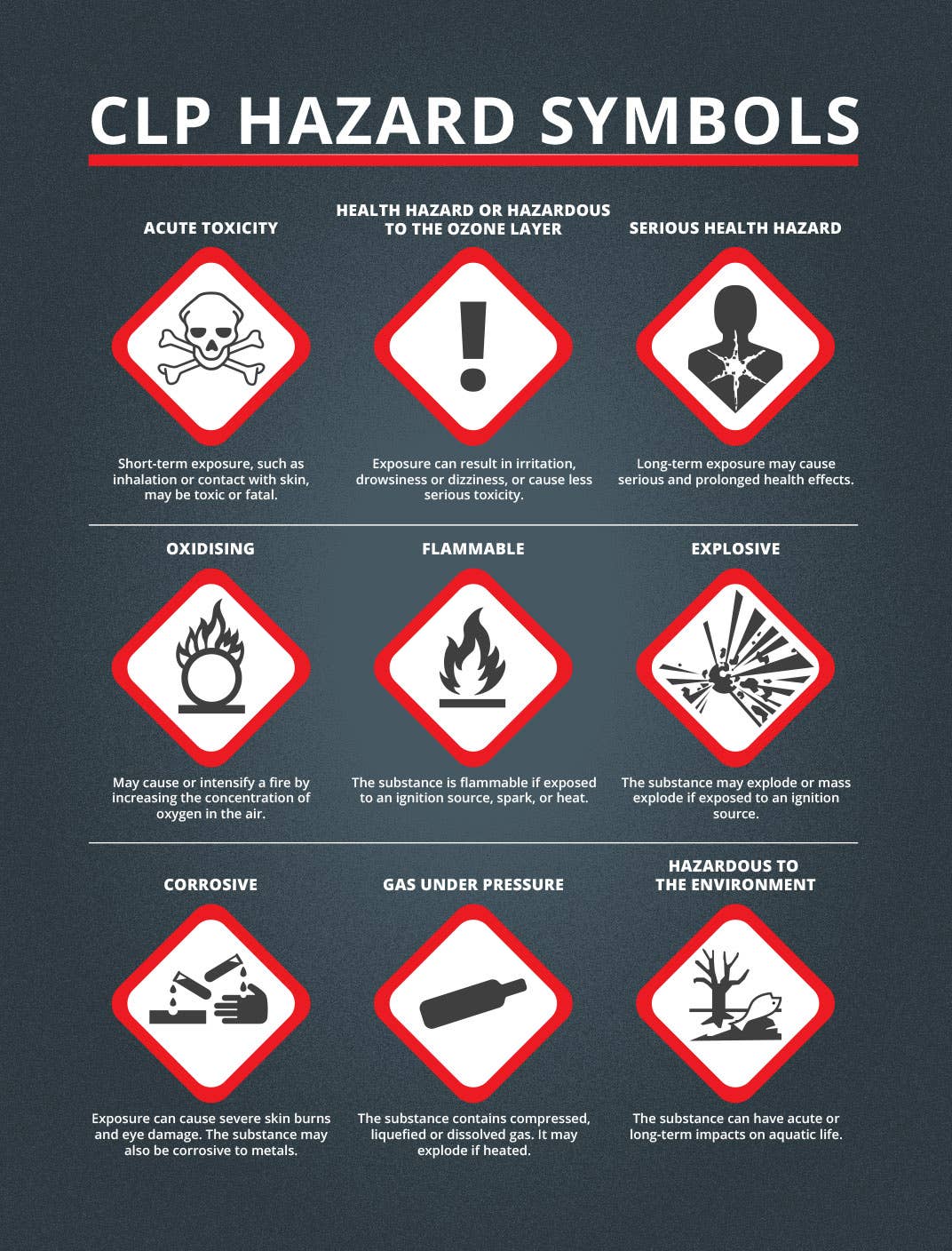The COSHH Hazard Symbols & Their Meanings
The GB CLP Hazard Pictograms
In 2015, the European regulations phased out the old orange CHIP symbols and replaced them with new harmonised classifications for global usage. These are part of the internationally agreed system called the ‘Globally Harmonized System of Classification and Labelling of Chemicals.’
This system was made by the United Nations in 1992, and it intends to make all packaging symbols conform to an internationally agreed criteria (all United Nations countries must conform to it).
The UNECE (the United Nations Economic Commission for Europe) stated that “given the reality of the extensive global trade in chemicals and the need to develop national programs to ensure their safe use, transport, and disposal, it was recognized that an internationally harmonized approach to classification and labelling” was needed.
Furthermore, “once countries have consistent and appropriate information on the chemicals they import or produce in their own countries, the infrastructure to control chemical exposures and protect people, and the environment can be established in a comprehensive manner.”
Now, the GB Classification, Labelling, and Packaging Regulations (GB CLP) sets out requirements for the labelling and packaging of chemical substances, which includes almost all substances used at work. They also set out the warning pictograms signs used on chemical substances.
If you work with hazardous chemicals, it’s important for you to know what these nine pictograms mean. They enable a quick understanding of the main hazards that the chemical substance present. These are
These symbols come with a signal word on the packaging, either ‘danger’ or ‘warning’ to help alert you to the level of hazard you face. You can see the nine pictograms and their meanings, as well as download a poster that explains all the pictograms, below:

Need a Training Course?
Our COSHH Training is designed to give workers knowledge of the health risks surrounding work with hazardous substances, including how to undertake a risk assessment for COSHH and identify the risks and control measures needed. It will ensure that you understand how to work safely with hazardous substances.
Further Resources:
- How to Safely Store, Handle & Dispose of Corrosive Chemicals
- COSHH – A Guide to Employers’ and Employees’ Responsibilities
- COSHH Quiz
- What is COSHH Training and Why is it Important for Cleaners?
- Understanding DSEAR – Area Classification & Hazardous Substances
- COSHH Storage Requirements
- What are the COSHH Requirements in a School?
- COSHH Training







